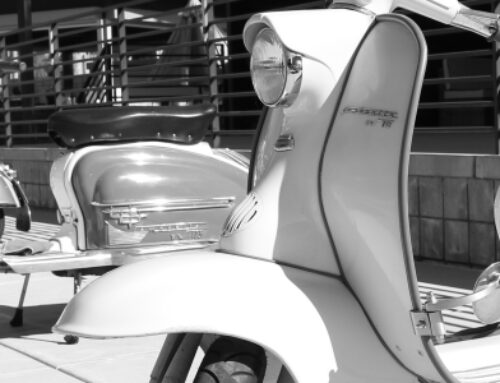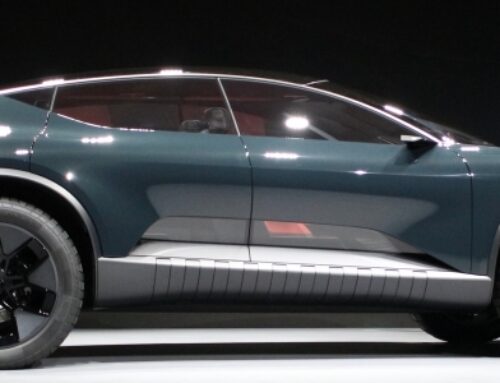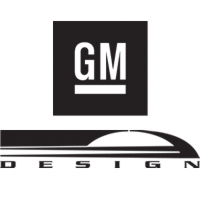Interview and posting by John Grafman
AutoDesignO and other journalists pin down the executives at Pixar to offer more insight into what it takes to develop and design the characters in CARS 3.
AutoDesignO: Cars have character, and in your movie the cars (in Cars 3) are the characters. How do you decide which cars play which parts: male, female, or whatever? How’s that determined?
Brian Fee (Director): It’s kind of what the story wants. We actually tried to, on this film, we had an actually effort to make sure we are trying to get as many female roles as possible. We do not want the audiences to feel like this is a boys movie and one of the most proud things we had in our audience preview was the audience uniformly… All of them said, “this is a thing for everybody”, boys and girls both agreed. That what a goal of ours is, so we are very happy that it seems to have been perceived that way. As far as female voices, who’s female? Who’s a male? It’s just, it doesn’t matter. If it matters to the story telling then that will dictate, if it doesn’t matter to the story telling then sometimes it’s just a whim.
Kevin Reher (Producer): We got lucky with Cristela Alonzo, as Cruz, who brought her own back story about being born in a border town of Texas and being told “you can’t dream. We cut hair and clean motels. You can’t be a stand up comic you can’t be an actress.”
Andrea Warren (Co-Producer): And not being taken seriously.
Kevin Reher: Not being taken seriously and self-limiting. We used a lot of her story.
AutoDesignO: So, there are no rules as to which cars become any particular character?
Brian Fee: We will design the characters if we know it’s a female character. For instance, the Cruz character, she started off as a he. In the very, very, very earliest forms of this movie, five years ago, five plus almost six years ago. It was originally just on a whim, it was originally just a male character. For no real reason it’s just how … Just what came out. That’s something that we want to change cause we were looking at (an) all male dominated cast.
I live in Petaluma, up in Sonoma, and we have a dirt track there and there’s a surprising large number of women drivers and NASCAR does not have (female drivers) … I think they have Danica in the cup series (that) is it! But there are lots of girls coming up through the ranks, you know young kids. It’s kind of a thing, we don’t want there to be, we don’t want those walls to be there. It was an opportunity to change the characters gender and therefore we redesigned that character. Cause Cruz was originally a lot more masculine, muscle car.
We still leaned in that direction. But, we wanted to…
Kevin Reher: She had a little more curves.
Brian Fee: Just a little bit more. To be honest, we actually looked at volleyball players. Pictures of volleyball players for inspiration.
Andrea Warren: They’re feminine, but they are very strong.
Brian Fee: They’re very strong.
Andrea Warren: You know and athletes, you know athletic.
Brian Fee: They aren’t trying to hard to be pretty, they are just naturally beautiful, and healthy, and strong. And that’s kind of the thing we are going for with Cruz. So it’s very interesting that we had a wall of humans. But not unlike the crazy 8 demolition derby, we had a wall of hockey players. Cause we were looking at hockey players and just photos of hockey players with big ol’ grins on their face and broken noses and missing teeth and that’s the inspiration that we wanted to try and get in there.
John Lasseter (Executive Producer): This is really important for me and for us because we’re gear heads here. We really have approached Cars 1, Cars 2, and now Cars 3, from the standpoint of really the balance between making a film for families and for general audience and for people all over the world, whether there into cars or not. But, we want to get the details right because we are gear heads. We love cars.
My personal background is I grew up in Southern California, Whittier California. My father was a parts manager at a Chevrolet Dealership and I kind of grew up in the parts department. In fact, when I go into a parts department today the smell just takes me back. I loved being at the dealerships, that’s back in the day, when of course all the car companies would paint the showroom windows white for the new models are here and then unveil all the new models. And, the car companies would do new body styles for every model they had, which is like … It was so exciting and I would come home with a stack of brochures and just pour over them for the whole year and then argue with my friends who came from Ford families, but Chevy’s were better, stuff like that. I grew up with that.
In Whittier, there was Whittier Boulevard, which was a legendary cruising street. In fact, my very first ticket at 16 years old was unnecessary use of the horn on Whittier Boulevard. In fact, I got the ticket in the parking lot of the Bob’s Big Boy drive-in, which was legendary. My mother was an art teacher, so when I started making Cars 1 it really felt like it was kind of the two … It was very personal for me, the two sides of my family, my mom and dad kinda coming together in this movie.
And its that real attention to detail, whether its a real model car that we are producing (or not), we want to make it feel really authentic. Or its a car that’s an original design, but we do so much study on that, that really we’re pulling from some great, great automobiles and then all the way through the sound design, we’re authentic with the sound design and getting the engine, the engines correct. Even the starter sounds to be correct and if you look under the hood or under the suspension it’s all accurate to what the cars are, which we really love doing and so all this is really great. But it’s not just the automobile itself but the whole world and the surroundings of this in the sense of getting the feeling of the tracks right. You know?
And, I don’t know in the clips did they show was there any images of the Florida?
Kevin Reher: Not yet.
John Lasseter: There’s the climax of the film is a big race, the final race in Florida and we actually created a track that is so beautiful. It like pulls from a lot of the latest F1 tracks like in, in the Middle East and China, as well as new soccer stadiums. These amazingly architectural, beautiful soccer stadiums. And we created a track on the beach that we would hope that everybody in the automotive world would look at and go “ohhh! We gotta build that.”
Brian Fee: It might be expensive.
John Lasseter: It would be really expensive, but it would be cool.
We can do this because we’re making a movie. It’s aspirational; let’s just say it’s aspirational. But we have, we just really believe in these movies, the characters are near and dear to us. The themes, the arches, the emotion and this one goes so deep into the history of racing too. Its also runs a gambit of the latest technology that we’ve been seeing. Not just in NASCAR, but in F1 and all other types of racing and what’s going on. With even the new racers, the really close friends we have of race car drivers, and they talk about their training and what they do. And then, as well as, really getting to the origin of the race of NASCAR racing itself and getting in there and really honoring a lot of the original pioneering drivers. And we have … I don’t even know how many voices of authentic automotive people.
Andrea Warren: NASCAR Racers.
Kevin Reher: Next generation.
Andrea Warren: Chase Elliott
John Lasseter: Lewis Hamilton and so on. So we really love all that. But we don’t have to do that. But we do it. It’s what we do here at Pixar. Every movie we make, I insist our film making teams do exhaustive research on whatever subject. Because we want experts like you to perk up and go “Oh my God, they’ve done their homework.” Ratatouille, is still to this day, the number one favorite movie of all chefs around the world. Because we got the details right.
It’s a story about a rat that wants to be a chef in the number 1 restaurant in Paris. Well it’s the same goes for these movies. We really want the authenticity to be there. And that’s what I mean it when I say I’m really excited to have you guys here, all of you here. Because it really means a lot, to have the real automotive press that we respect so much to come here and not look at a car, but look at a movie. And talk about it and so I really appreciate you guys making an effort to come here and talk about this. We really have loved, and we love to put fun in the environment as well. Where we pull from, we always put car shapes sort of in the natural environment of this world. It’s a fantasy world where cars are alive and there are no people. And then they put it, put it into their architecture and stuff like that. So we’ve always had a lot of fun with that and it’s something we’ve really loved doing. A lot of people don’t notice it but its kinda there you can sense it, feel it, it’s fun.
______________________________________________________
John Lasseter: We wanted to really reflect auto design of today.
AutoDesignO: Technically, how do you create the animation, from sketching to digital modeling? How many are on your team, and how many man-hours does it take to do something like this?
John Lasseter: They can answer that.
Andrea Warren: Many [all laugh].
Kevin Reher: More than we want, less than we could.
John Lasseter: The last thing I want to say… if you look and really compare from Cars 1 that came out in 2006 to now, we have made tremendous investments in our rendering ability, how realistic our images can look. We were really on the cutting back in 2006 to get accurate reflections, because we were doing … up until Cars we were kind of doing texture map reflections. Most of the time it looked fine, but for some reason when we did the texture map reflections onto the cars, they never looked real. It’s because everybody drives on roads, and read your car magazine, looks at cars on TV… and there’s something about reflection, in the paint, in the chrome, in the glass, that is just … we’re used to. Without having it accurate, it never was believable that they were cars. So, we had to upgrade our technology in 2006 to implement it in our system, what they call “ray tracing” to get accurate reflections. It was very expensive computationally to do.
Now, we jump forward, and now ray tracing and radiosity, all this stuff, is now what we have. We use it all the time. We’ve implemented a new rendering system on Finding Dory, and I talked to the team and said, “Okay, now let’s lean in,” because when we do the Toy Story movies, we have to really reflect … trying to make it feel of the same world, and the world was created with the first computer-animated feature film, and we’ve gotten tremendous advances in the last 21 years of this.
With Cars, you’ll see that there’s a bit more. I said, “Let’s make them look as real as we can make them, and use the new rendering, all the capabilities, to do this.” That’s why there’s this … they just look that much more real in Cars 3 than they did before, and it’s really spectacular-looking, and the team just did an amazing job in this, in applying it.

































